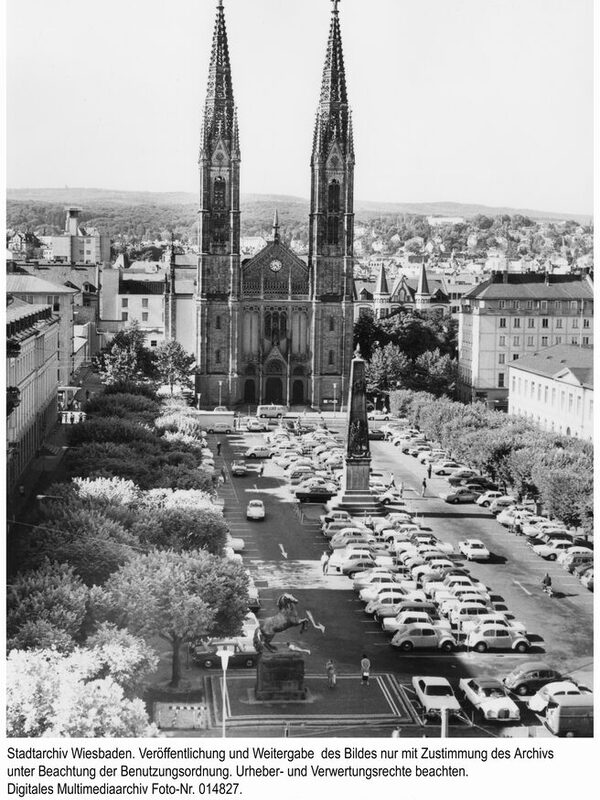Luisenplatz
Luisenplatz, named after Duchess Luise zu Nassau, is located in Wiesbaden's city center between Luisenstraße and Rheinstraße within the historic pentagon. The classicist square was designed in 1830 by the master builder and later building councillor Eberhard Philipp Wolff (1773- 1843). Wolff also designed the adjacent mint building on the east side of the square, which was erected in 1829/30, while the former Pädagogium on the west sideRheinstraße within the historic pentagon. The classicist square was designed in 1830 by the master builder and later building councillor Eberhard Philipp Wolff (1773- 1843). Wolff also designed the adjacent mint building on the east side of the square, which was erected in 1829/30, while the former Pädagogium on the west side was built in 1831 according to plans by master builder Karl Friedrich Faber (1792-1856).
The church of St. Boniface on Luisenstraße, which dominates the square, was the first Catholic church in the city after the Reformation. The site and building materials were acquired by Duke Wilhelm zu Nassau after the collapse of the previous neoclassical building with the intention of having a new city palace built there. A connection to the summer residence in Biebrich was to be established via the Biebricher Allee and the Adolfsallee leading to it. After abandoning this plan, Duke Adolph zu Nassau donated the building site back to the Catholic community in 1841, who commissioned Philipp Hoffmann to build the church. The neo-Gothic design language of the church broke with the classicist principle according to which the square had been designed.
Two monuments were erected on the square: The Waterloo Memorial, inaugurated on 18.06.1865, an obelisk in the middle of the square commemorating the victory over Napoleon at Waterloo in 1815 and the Nassau soldiers who fell in this battle. Unveiled on October 21, 1934, the Oraniendenkmal, a bronze sculpture of a rearing horse, is dedicated to the 1st Nassau Artillery Regiment No. 27 Oranien, which fought in the First World War.
In the 1960s and 1970s, Luisenplatz experienced the low point of its appearance as a parking lot. Finally, after the construction of an underground parking garage in 1983/84, it was restored almost to its original classicist form. The two monuments were also restored in this context.
Literature
Bubner, Berthold: Wiesbaden. Baudenkmale und historische Stätten, 2nd ed., Wiesbaden 1993 [pp. 92-97].
Emig, Erik; Knop, Detlef; Steinbach, Hartmut (eds.): Der Luisenplatz in Wiesbaden. Origin - Development - Redesign, Wiesbaden 1985.
